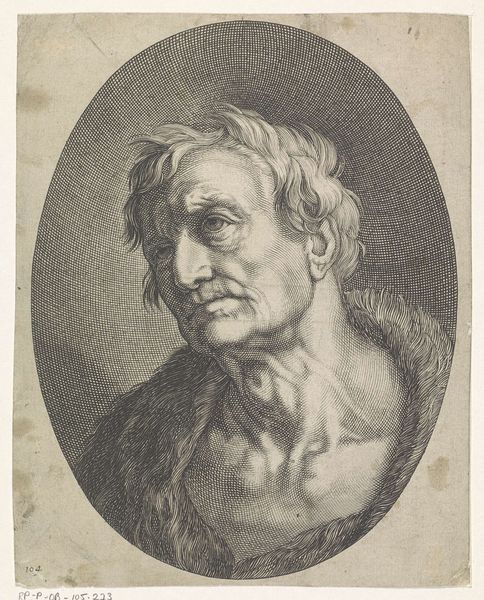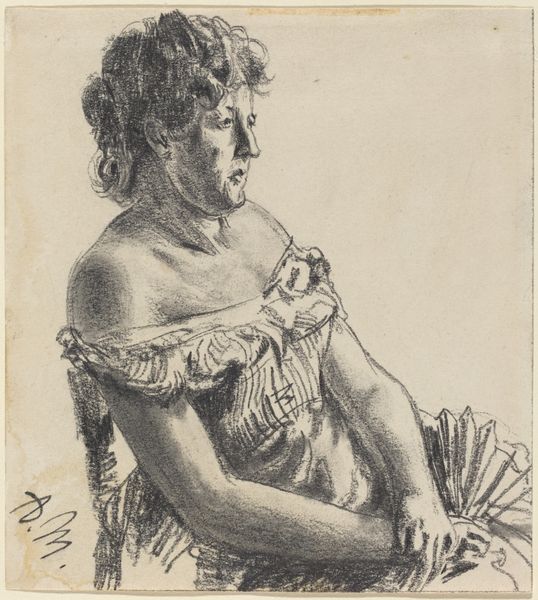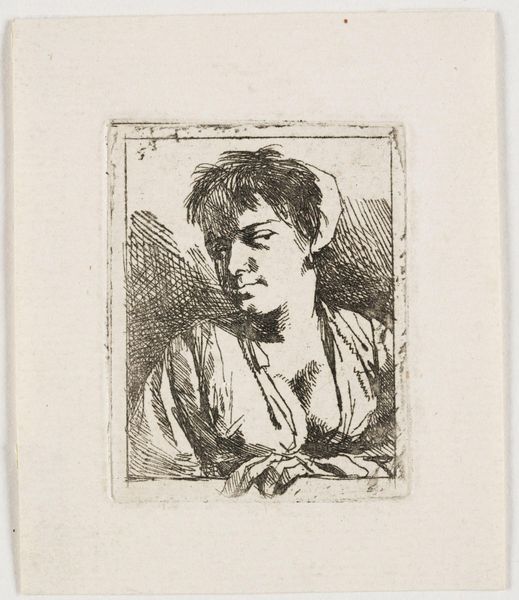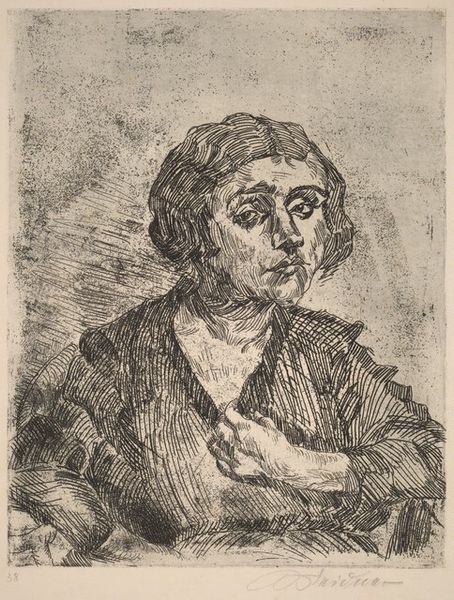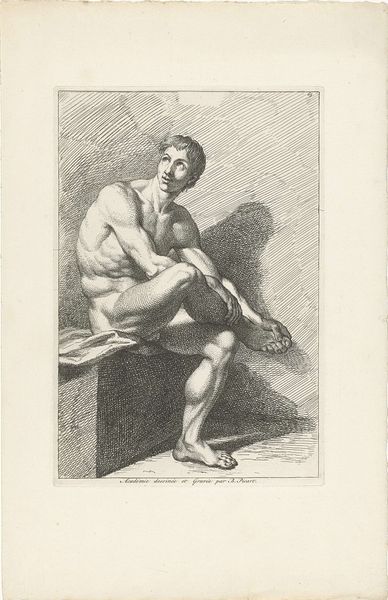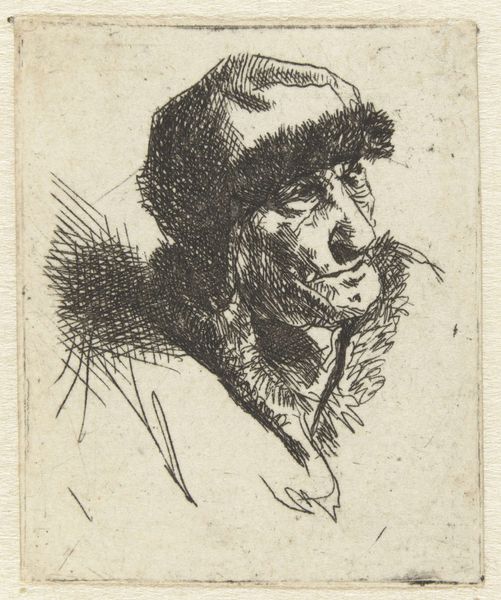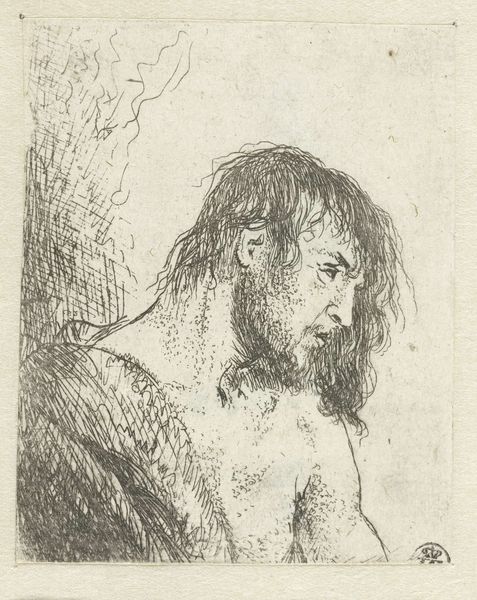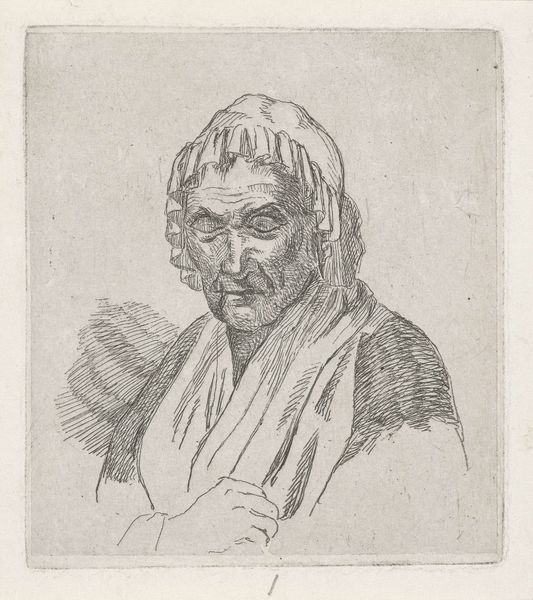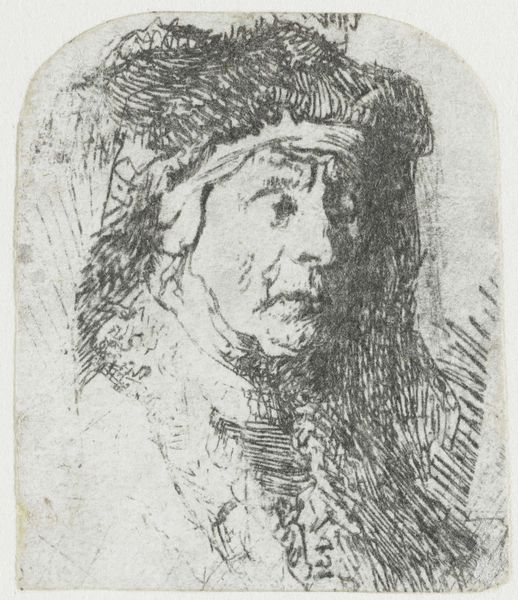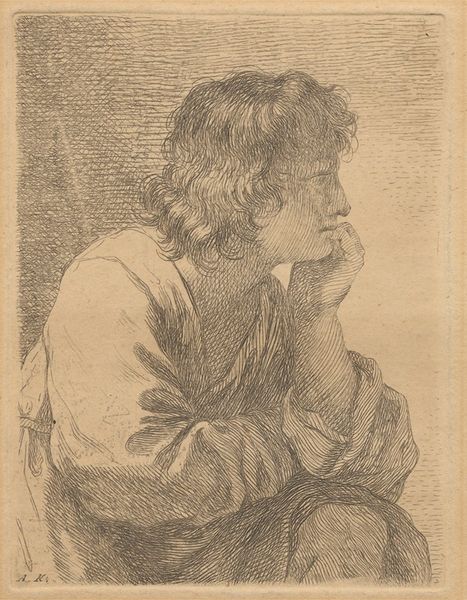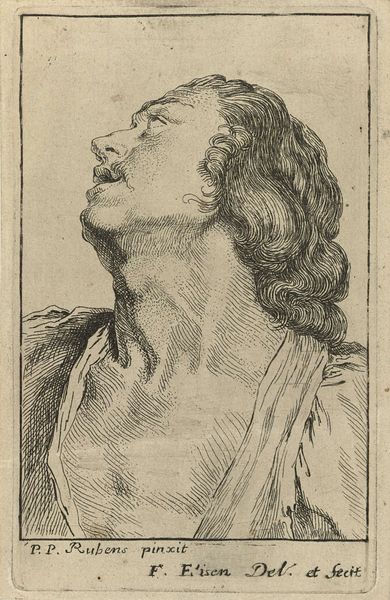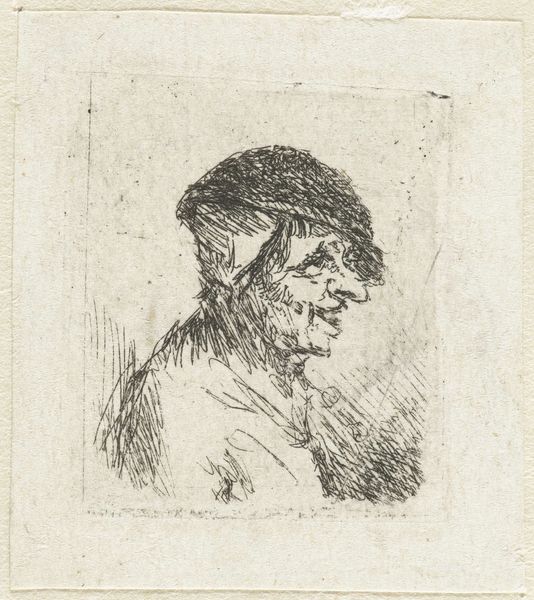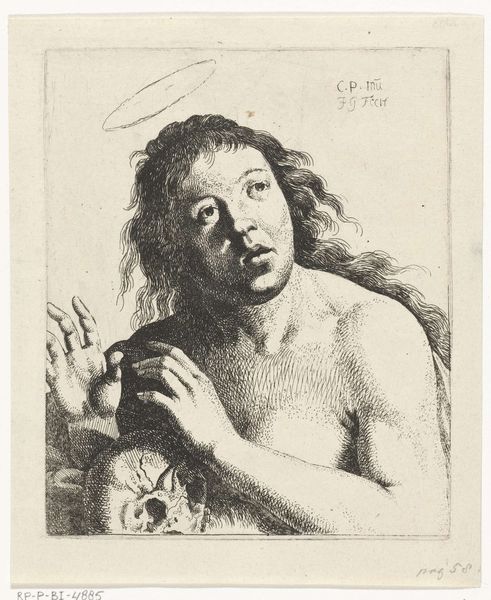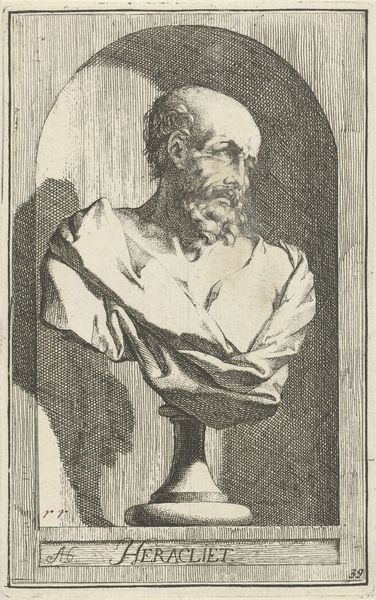
Portret van een man met arm voor zijn borst 1820
0:00
0:00
drawing, print, etching, engraving
#
portrait
#
drawing
# print
#
etching
#
romanticism
#
portrait drawing
#
sketchbook art
#
engraving
Dimensions: height 265 mm, width 180 mm
Copyright: Rijks Museum: Open Domain
Curator: Here we have David-Pierre Giottino Humbert de Superville’s “Portret van een man met arm voor zijn borst”, created around 1820. It's currently held at the Rijksmuseum. Editor: What strikes me immediately is the sitter's melancholic expression, and how effectively that is achieved through such sparse lines. It's rough, unfinished even, yet deeply evocative. Curator: The "unfinished" quality is central to its reception. Etchings and engravings like these circulated widely, contributing to evolving ideas of masculinity and the role of emotion in the post-revolutionary era. Consider how this work embodies Romantic ideals. Editor: Absolutely. I am interested in the production itself. What kind of labor went into its making, and what was the access like to art education, tools, and the final presentation of that art to a consuming public? Curator: That's vital, to explore access and production! Superville occupied a fascinating place in the Dutch art world, straddling different social spheres. This print would have likely circulated among fellow artists, academics, and collectors, reinforcing social networks and aesthetic values of the time. Editor: The choice of etching too, so easily reproducible, feels deliberate, especially within those evolving networks. It makes me wonder how the material and its method amplified a sense of individuality versus standardization. Is it an art piece, or commodity? Curator: That tension is precisely what makes the artwork compelling! These prints helped democratize art and knowledge but also established hierarchies within the art market. The very act of making a portrait accessible also influences ideas of the sitter and their place within society. Editor: Looking closer at the man's clothing, that unadorned shirt, reinforces that feeling of the handmade, a human approach. In its own way, the sitter is consumed as a type, but that material reality reminds us it all came from someone's hands and their skills, like it or not. Curator: Precisely. An artwork such as this reminds us that art isn't just about aesthetic pleasure but is entangled with history, society, and human aspiration. Editor: Agreed. This etching speaks volumes about both artistic labor and cultural construction within its time, far beyond that man's somber pose.
Comments
No comments
Be the first to comment and join the conversation on the ultimate creative platform.
